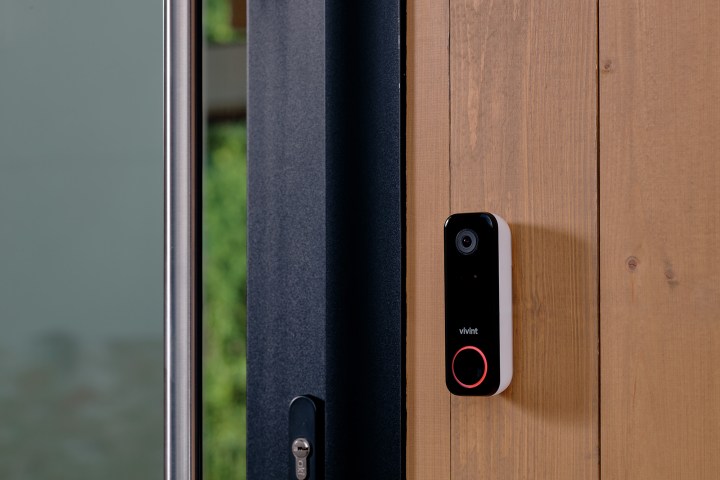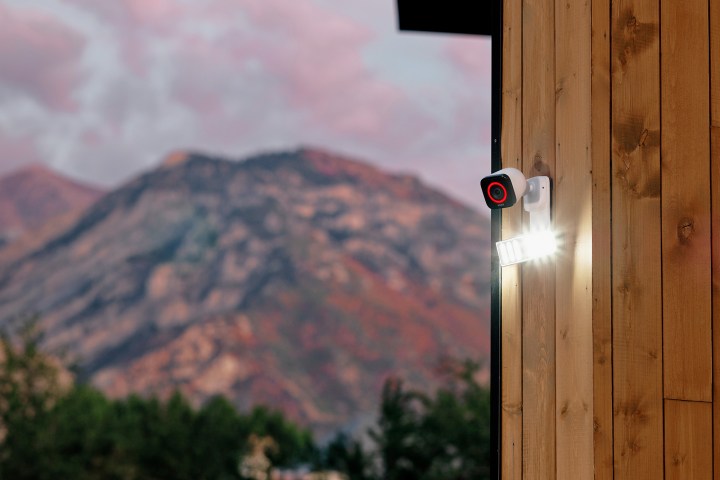I’ve had a Vivint smart home for about 18 months, ever since reviewing the Vivint Doorbell Camera Pro and the Vivint Outdoor Camera Pro. For the most part, I find them to be incredibly smart and useful. Plus, the integration with Google and Philips Hue in particular up the “whole-home smart home” game when I can unlock my front door and have my lights turn on. This week, Vivint announced updates to the Doorbell Pro and Outdoor Camera Pro, and it’s great to see that “smart” extends to the company itself. Let’s dive in.
On-device recording
Vivint upgraded all of its camera products — the Vivint Doorbell Camera Pro, Outdoor Camera Pro, and Indoor Camera Pro — in a pretty significant way. Vivint added on-device recording for 24/7 monitoring for up to 10 days. All that footage is stored on the device, which is significant in one keyway. The previous generation of the cameras streamed footage in real-time from the cameras to a separately purchased smart hard drive. From there, if you wanted to review the footage, it would stream back over Wi-Fi to Vivint’s servers, and back to your phone.
Put simply, this can cause a significant hit on your home Wi-Fi’s bandwidth. With the new cameras, the footage is stored on a secure SD card locally and only transmitted when it’s being streamed or viewed. Meanwhile, onboard AI will continue generating smart clips detailing what happens (people, packages, etc). Plus, aside from freeing up bandwidth on your home network, local recording storage also works even when your Wi-Fi is down. All told, it’s enough to get me pretty geeked, so I’ll be excited to test these things out. That’s the biggest news that covers all the devices, so let’s get into each device in particular.
Vivint Doorbell Camera Pro

The second generation of Vivint’s Doorbell camera pro retains all the things that made the first generation really nice. That includes the halo light that shows visitors where the doorbell button is, the 180-degree horizontal and vertical field of view, and the loudspeaker for speaking with guests. While the first generation doorbell had a rather plain look, the newer generation gets a much sleeker, more modern aesthetic which looks much nicer, but also very black. It may or may not match your home’s exterior.
The loudspeaker is louder in this generation at 90db, up from 65db. While I never had a problem with the first generation’s speaker, increasing the volume by almost a third is significant. When package pirates are detected, the doorbell can emit a sound to capture their attention, and 90db will be hard to ignore.
Speaking of package detection, the Doorbell Pro will now follow the full cycle of a package on your doorstep, automatically turning Deter mode on when a package is detected and turning it off when it’s no longer detected. It’s worth mentioning that the doorbell can’t tell the difference between bringing a package inside or someone running off with it.
Vivint Outdoor Camera Pro
Like the Doorbell Camera Pro, the Vivint Outdoor Camera Pro also gained the ability to locally store data, easing the network congestion of a home. The Outdoor Camera Pro has a 140-degree field of view and 85-decibel speaker which can be used to speak through the camera, or as an extension of your alarm speaker. This year, Vivint included new, more powerful IR LEDs and sensors for night vision as well. The 4K daylight sensor is capable of 3X zoom. But the next accessory for this camera ups the ante quite a bit.
Vivint Spotlight Pro

New to the Vivint line this year is the Spotlight Pro, which is an add-on for the Outdoor Camera Pro. The Spotlight Pro comes with 180-degrees of LEDs that can throw a lot of light, but Vivint takes things a step farther. The onboard AI can light up a single person and follow them across your property, leaving no doubt they’re being watched. Also, while deter mode is turned off, the Spotlight Pro can follow a person with softer lighting to help them move around in the dark.
It’s this kind of intelligence that really makes a smart home feel smart. It also makes Vivint seem really smart as well. That’s why the announcements today are exciting because they reflect not only technological advancements but also a company building better experiences.
Vivint Indoor Camera Pro
Vivint is updating its indoor camera with the same onboard recording I already covered. Vivint also added a couple of enhancements that are also quite smart. The first is a “ping” call-out button that allows someone in the home to contact the Vivint homeowner. The is most useful for children trying to contact a parent while they’re out and about, and it came around because Vivint was told by some homeowners that one of the more common uses for its Doorbell Camera Pro was when a child would go outside and ring the doorbell to talk to mom or dad. Vivint just figured it’s smarter to add that ability to an indoor camera.
Vivint also added the ability for homeowners to only allow the indoor camera to record when the security system is armed. Since the camera won’t record when you’re home, it adds more privacy overall.
Other announcements
Vivint is also developing two other interesting programs: Smart Insurance and Smart Energy. Vivint started working with solar contractors last year to install solar panels in Vivint smart homes. Vivint has about 5,000 such customers to date, and it wants to start integrating that functionality into the Vivint home panel. Additionally, new customers can use solar to offset the cost of installation not only of the solar panels but of the Vivint smart home system itself.
Finally, Vivint is launching Smart Insurance. It’s like a safe driver discount on auto insurance but geared toward homeowner’s insurance. Details on this are still a bit on the sketchy side, but based on what devices a homeowner has installed, Vivint can help design custom insurance packages for homeowners to hopefully lower rates.
Pricing and availability
The new Vivint Doorbell Camera Pro and Vivint Outdoor Camera pro are both available now at $250 and $400 respectively. The Spotlight Pro ships in July for $250 and the Indoor Camera Pro will be available later this year for $200. All can be purchased from Vivint’s website.
Editors' Recommendations
- Wyze Cam Floodlight v2 adds tons of new features at a lower price tag
- Samsung goes all-in with AI, reveals several new smart home appliances at CES 2024
- Google Home adds new camera features and support for Nest Cam Outdoor
- The truth about outdoor smart home gadgets and extreme cold
- Ecobee takes on Ring, Arlo with its first smart doorbell camera




